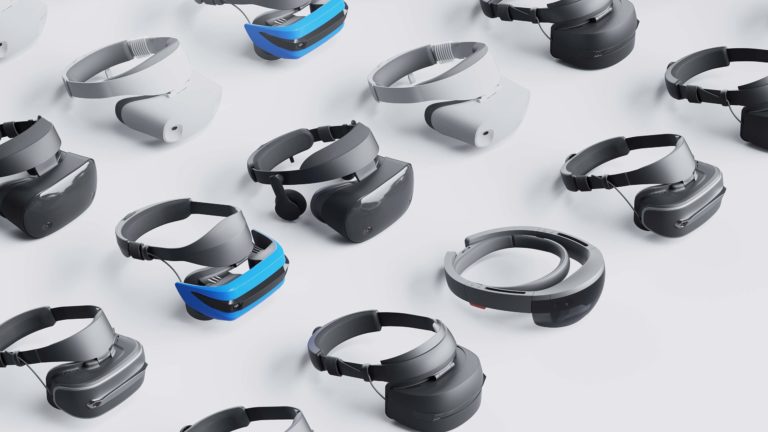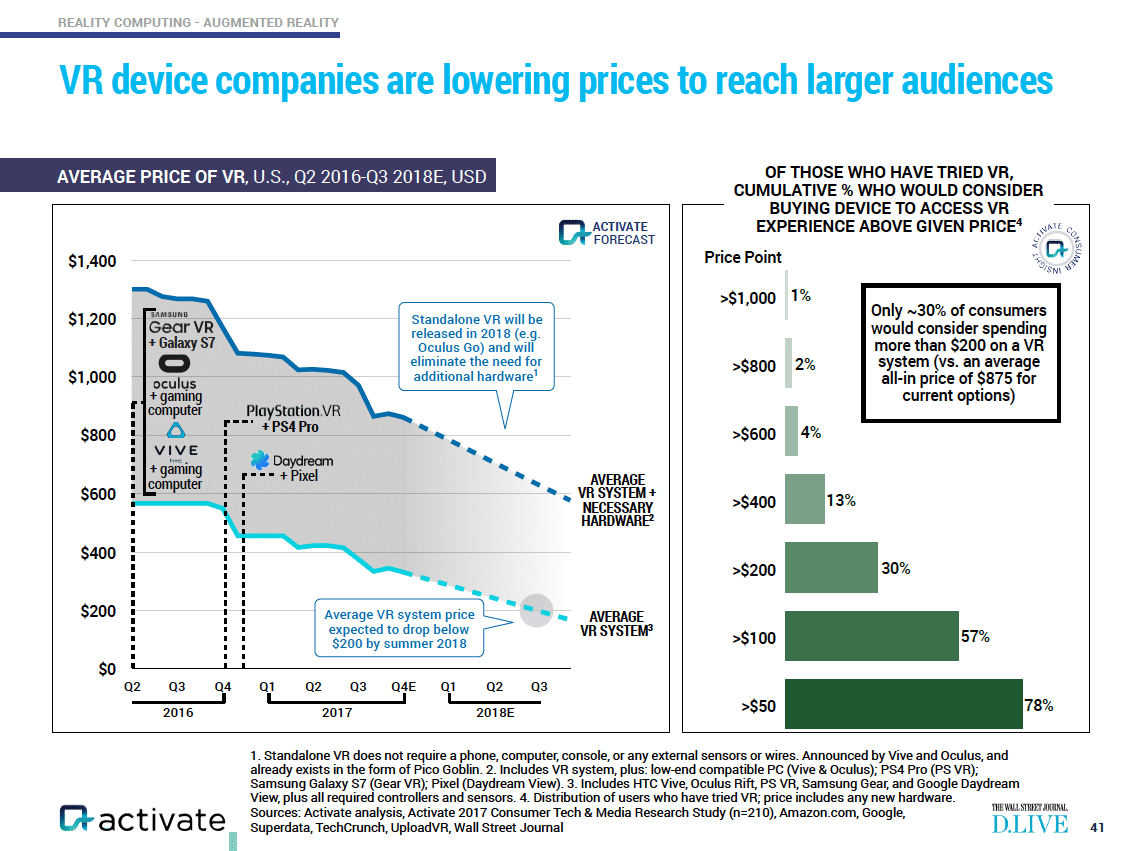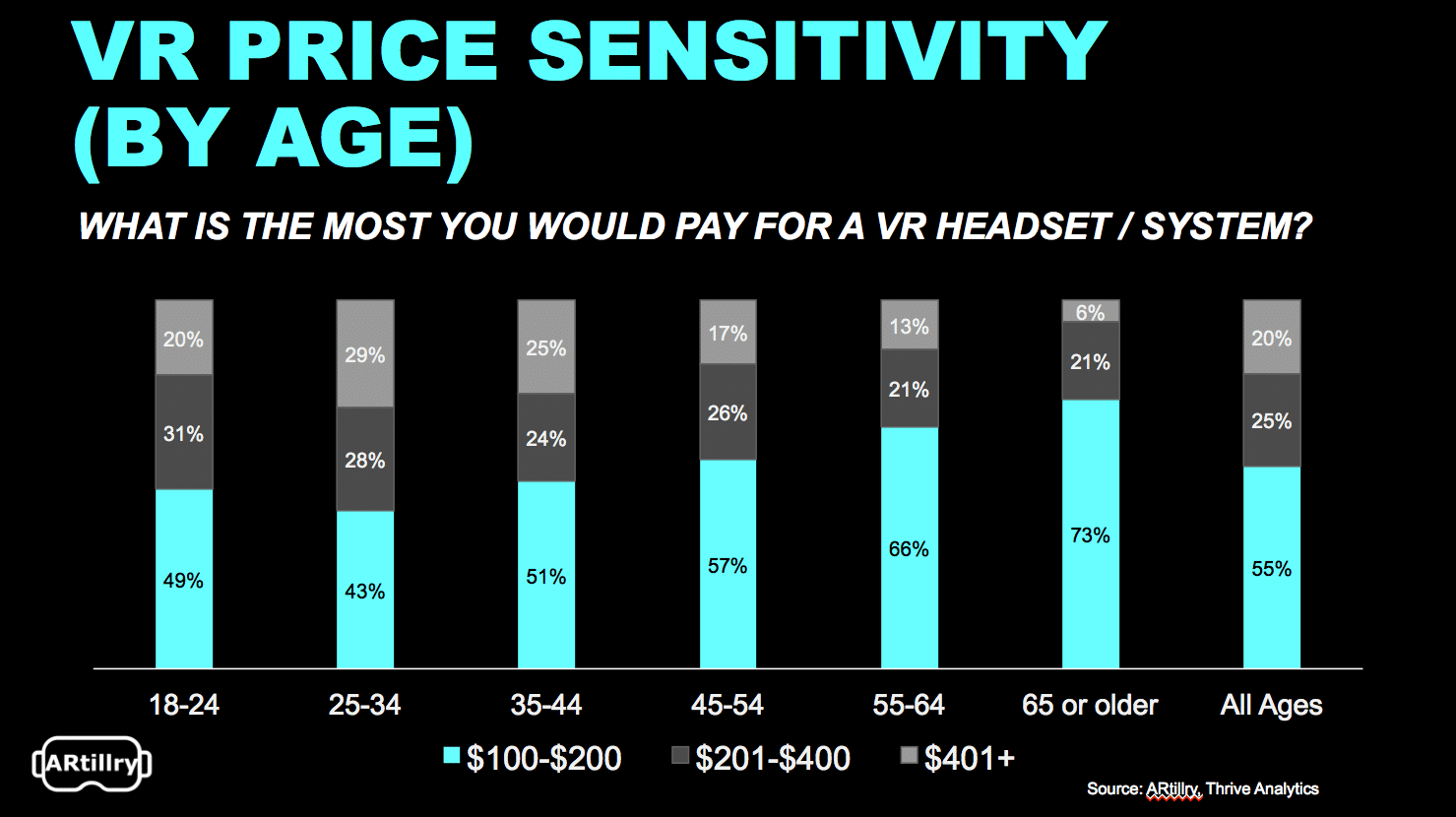
Price is a key factor for early stage VR adoption, not surprisingly. But what is the most optimal and strategic price point for VR adoption? As we examined last week, it depends if you’re going for market share or margins.
The former is more strategic, long-term… but only if you have the deep pockets and revenue model to support loss-leader pricing (sacrifice margin for market share). That’s what Oculus will do with the standalone Oculus Go, to the detriment of margin-seeking hardware players like HTC.
And it’s no mistake that the price tag for Oculus Go is $199. In recent consumer survey data from Activate, that’s the price at which adoption interest jumps to 57 percent. This aligns with our past survey data with Thrive Analytics which shows that same $200 price point where demand grows.


Price obviously is tied to the VR quality and where the hardware sits on the range of device tiers. The emerging standalone category will be the one to watch, and we’re bullish (stay tuned for a new forecast next week). That has a lot to do with price, but also dedicated hardware.
Standalone VR like Oculus Go will have hardware specs tuned optimally for VR. Compare that with something like Gear VR: Though it’s a well penetrated and decent VR rig, it uses hardware that’s built for other primary functions (a phone). See John Carmack’s thoughts on this.
Beyond standalone VR, the emerging tier of tethered devices from Windows Mixed Reality will have a positive impact on the marketplace. Inside-out tracking (inherited from Hololens) will push quality standards, and more devices will put downward price pressure on the entire sector.
Meanwhile, Activate projects less than stellar overall VR penetration — around one percent of the global population by 2021. That’s about 60 million units sold per year. We’ve counted current penetration around 17 million, and it needs to get to 100 million to signify a healthy installed base.
The latter isn’t annual sales but overall installed base. Given a 2-3 year replacement cycle for VR hardware (which has yet to be proved), 100 million active units in market would be reached somewhere between 2020 and 2021. We’ll be watching closely as it approaches that milestone.
More to come in ARtillry Intelligence’s AR & VR revenue forecast next week.

For a deeper dive on AR & VR insights, see ARtillry’s new intelligence subscription, and sign up for the free ARtillry Weekly newsletter.
Disclosure: ARtillry has no financial stake in the companies mentioned in this article, nor received payment for its production. Disclosure and ethics policy can be seen here.
Header image credit: RoadtoVR
